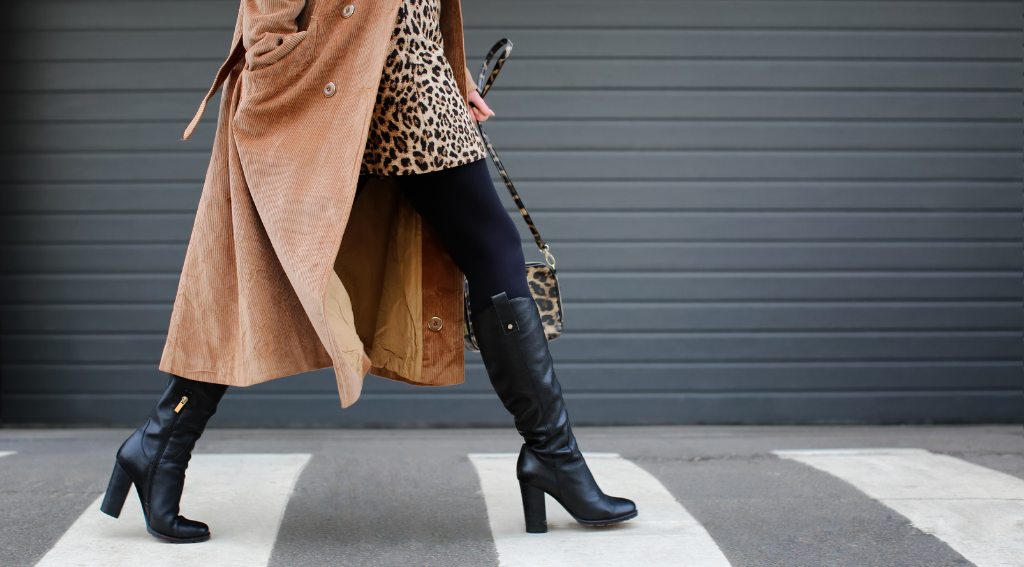Here’s our list of 2024’s biggest fast fashion brands to avoid at all costs. These unethical clothing brands not only generate massive amounts of waste but also actively harm millions of workers in the process. It’s time we held accountable those brands turning a blind eye to the impact of their actions. Read on to learn more about the fast fashion environmental impact and the retailers that don’t deserve your money or support.
The Worst Fast Fashion Brands to Avoid in 2024
So, why is fast fashion bad? Before we just right into the fast fashion brands list, let’s have a look at the fast fashion environmental impact. Unethical fast fashion brands are notorious for their breakneck speed in churning out new trends, fueled by low prices and disposable clothing. The environmental cost of this race to the bottom is staggering – from excessive water usage to toxic chemical releases and mountains of textile waste. In fact, the fashion industry is responsible for the consumption of 79 trillion liters of water annually, contributing to about 20% of industrial wastewater. That’s hardly a surprise given that 92 million tonnes of textiles waste is produced every year.
The Global Fashion Agenda estimates that the fashion industry’s carbon footprint could swell to 2.8 billion tons of CO2 by 2030 if we don’t pump the brakes on this trend-driven train. The Ellen MacArthur Foundation reports that the equivalent of one garbage truck of textiles is wasted every second – yes, every second! This is the stark reality we face, and it’s high time we make informed choices about where we invest our fashion dollars.
What Is Wrong With Fast Fashion?
In addition to polluting our Earth and wasting tons of natural resources, the world’s biggest fast fashion brands are also involved in modern-day slavery. For example, during a 2020 investigation, a Boohoo supplier’s factory in Leicester, UK was accused of paying meager wages as little as £3.50 ($4.40) an hour, well below the national living wage. The workers were subjected to unsafe conditions that were a clear violation of workers’ rights.
H&M, one of the worst fast fashion brands of 2024, was on the list of names associated with the Rana Plaza factory disaster. The building collapsed, killing 1,134 workers and injuring over 2,500, making it one of the deadliest industrial disasters in history.
We can’t talk about the top fast fashion brands to avoid without mentioning the OG of unethical business practices – SHEIN. In SEIN’s Chinese factories, workers are forced to produce a staggering 500 pieces of clothing per day. Shockingly, this translates to a meager payment of just 3p per item they create according to the Channel 4 documentary titled “Untold: Inside The Shein Machine.”
As consumers, our choices matter. By supporting transparent, fair trade, and sustainable clothing brands, we can send a powerful message to the fashion industry. Let’s choose quality over quantity, and together, we can redefine fashion as a force for good.
Which Brands Are Fast Fashion?
It’s pretty easy to pinpoint which are the biggest fast fashion brands to avoid in 2024. All you have to do is look at their rapid production cycles, low-cost strategies, and sometimes questionable labor and environmental practices.
Fast fashion brands often offer products at extremely low prices. If a brand consistently sells clothing at prices that seem too good to be true, it may be an indication of a fast fashion approach. Fast fashion brands tend to have a high turnover of styles and a large inventory. If a brand constantly introduces a wide range of new styles and has a vast inventory, it could be a sign of a fast fashion approach.
Ethical and sustainable practices are typically not associated with fast fashion. Check a brand’s transparency about its supply chain, labor practices, and environmental impact. If this information is not readily available or seems vague, it might raise concerns.
It’s always a good idea to check a brand’s latest initiatives, certifications, and reports on labor and environmental practices to make an informed decision about supporting them.
The 153 Worst Fast Fashion Brands to Avoid in 2024
- & Other Stories
- 18Montrose
- Abercrombie & Fitch
- Accessorize
- Afound
- Agent Provocateur
- Amazon
- Anthropologie
- ARKET
- ASOS (Check out our sustainability report)
- AsYou
- Banana Republic ( Check out our full review here)
- Bershka
- BHLD
- Billabong
- Bonmarché
- Boohoo
- BoohooMAN
- Burton
- Campri
- Coast
- Collusion
- COS
- Cruise
- DC Shoes
- Debenhams
- Dorothy Perkins
- Edinburgh Woollen Mill
- Evans
- Everlast
- F&F at Tesco
- Fabletics
- Fashion Nova
- Femme Luxe
- Fila
- Firetrap
- Flannels
- Forever 21
- Free People (Read our full review of Free People)
- GAP
- Gelert
- George at ASDA
- Gilly Hicks
- Gul
- H&M
- HERA
- Hollister
- House of Fraser
- In The Style
- I Saw It First
- Jack Wills
- J.Crew
- J.Crew Factory
- Jane Norman
- ANYDAY at John Lewis
- Kangol
- Karen Millen
- Karrimor
- LA Gear
- La Senza
- Lillywhites
- Loavies
- Lonsdale
- Lovell Sports
- Madewell
- Mango
- Marks & Spencer
- Massimo Dutti
- Matalan
- Mennace
- Meshki
- Missguided
- Misspap
- Miss Fiori
- Miss Selfridge
- Missy Empire
- Monki
- Monsoon
- Motel
- Mothercare
- Nasty Gal
- New Chic
- New Look
- Next
- No Fear
- Nobody’s Child
- Nutmeg at Morrissons
- Oasis
- Oh Polly
- Old Navy
- Oliver Bonas
- Outfit
- Peacocks
- Pretty Little Thing
- Primark
- Pull & Bear
- Quiksilver
- QUIZ
- Reclaimed Vintage
- REVOLVE
- REVOLVEman
- River Island
- Romwe (Read our full Romwe review)
- Roxy
- SHEIN
- Slazenger
- Sondico
- SoulCal
- Sports Direct
- Stradivarius
- Superdry
- Temu
- TK Maxx
- Topman
- Topshop
- Tu Clothing at Sainsbury’s
- UNIQLO (Read more about UNIQLO here)
- United Colors of Benetton
- Urban Outfitters (Read our full review here)
- USA Pro
- USC
- Van Mildert
- Victoria’s Secret
- Wallis
- Warehouse
- Weekday
- Zaful
- Zara (Check out our Zara review)
- Cotton On
- Rue21
- Forever New
- Dynamite
- Garage
- SHEIKE
- Windsor
- Charlotte Russe
- Showpo
- Sabo Skirt
- Tiger Mist
- Ally Fashion
- Glassons
- Factorie
- Valleygirl
- Ardene
- Maurices
- Fashion to Figure
- Suzy Shier
- Papaya Clothing
- Eclipse
- Tobi
- Lulus
- Dissh
- The Iconic
7 Reasons To Avoid Fast Fashion at All Costs

Environmental Impact: Fast fashion contributes significantly to environmental degradation. The excessive use of resources, water pollution from dyes and chemicals, and the massive volume of textile waste are just a few examples of how this industry harms our planet.
Exploitative Labor Practices: Many fast fashion brands have been criticized for exploiting cheap labor in developing countries, where workers are subjected to low wages, poor working conditions, and even unsafe environments. Supporting such practices perpetuates human rights abuses.
Poor Quality and Short Lifespan: Fast fashion often prioritizes quantity over quality. Clothes are designed to be worn a few times before falling apart, promoting a culture of disposability. Investing in durable, higher-quality items can save money in the long run and reduce overall consumption.
Negative Impact on Local Economies: The exploitation of cheap labor in developing countries can have detrimental effects on local economies. Instead of fostering sustainable growth, fast fashion often perpetuates a cycle of poverty and dependency.
Lack of Transparency: Fast fashion brands are often criticized for a lack of transparency in their supply chains. This opacity makes it difficult for consumers to know the true environmental and ethical impact of the products they purchase.
Health Concerns: The use of toxic chemicals in dyeing and finishing processes can pose health risks to both factory workers and consumers. Sustainable fashion options prioritize non-toxic and eco-friendly fabrics and safer production methods. Some options include Tencel, Bamboo, Organic cotton, and Econyl.
Supports a Throwaway Culture: Fast fashion perpetuates a culture of disposable clothing, where garments are worn a few times and then discarded. This not only contributes to landfills but also diminishes the value we place on the items we own.
7 Simple Steps to Avoid Fast Fashion

Start by learning about the fast fashion environmental impact and how these unethical clothing brands violate human rights. Understand the key issues such as excessive resource consumption, exploitative labor practices, and the high environmental cost of disposable fashion. Knowledge is the first step toward making informed and sustainable choices.
Prioritize Quality Over Quantity
Instead of succumbing to the allure of cheap, trendy clothing that may not last, focus on building a quality wardrobe. Invest in timeless, durable pieces made from sustainable materials. High-quality items tend to have a longer lifespan, reducing the need for frequent replacements.
Explore Secondhand and Vintage Shopping
Embrace the treasure hunt of secondhand and vintage shopping. Thrift stores, consignment shops, and online platforms for pre-owned fashion allow you to find unique pieces while minimizing your contribution to the demand for new, mass-produced items. This not only reduces waste but also promotes a circular fashion economy.
Mend and Upcycle
Instead of discarding clothing with minor damage or wear, consider learning basic mending and sewing skills. Repairing your garments extends their lifespan and reduces the need for constant replacements. Additionally, get creative with upcycling – transform old pieces into something new and unique, giving them a second life in your wardrobe.
Support Sustainable and Ethical Brands
Discover and support affordable sustainable fashion brands that prioritize sustainability, ethical labor practices, and transparency. Look for certifications such as Fair Trade, Global Organic Textile Standard (GOTS), or other recognized ethical and environmental standards. Many brands are now committed to reducing their environmental footprint and improving social responsibility.
Adopt a Minimalist Mindset
Embrace a minimalist approach to your wardrobe by curating a collection of versatile, high-quality items that you genuinely love and will wear regularly. This mindset helps you resist the urge to constantly chase the latest trends and encourages a more mindful and intentional approach to fashion.
Plan Your Purchases Mindfully
Before making a new clothing purchase, take a moment to assess your wardrobe and identify any gaps. Plan your purchases strategically, focusing on items that complement your existing pieces and serve multiple purposes. This thoughtful approach helps prevent impulsive buys and contributes to a more intentional and sustainable closet.
Conclusion
The extensive list of over 100 fast fashion brands to avoid serves as a stark reminder of the urgent need for change. From environmental degradation to exploitative labor practices, these fast fashion retailers
have been at the forefront of a throwaway culture that sacrifices our planet and its people for fleeting fashion trends. Let’s shift our focus away from the biggest fast fashion brands and towards brands that prioritize ethical practices, environmental responsibility, and transparency in their operations.

About Author
Konstantina Antoniadou
Sustainability writer, with almost ten years of expertise in media and publishing. Focused on helping conscious readers discover the best fashion, skincare & non-toxic home products on the eco market. Her work has been featured on various digital magazines and blogs, and she continues to strive towards making a positive impact through her writing.

